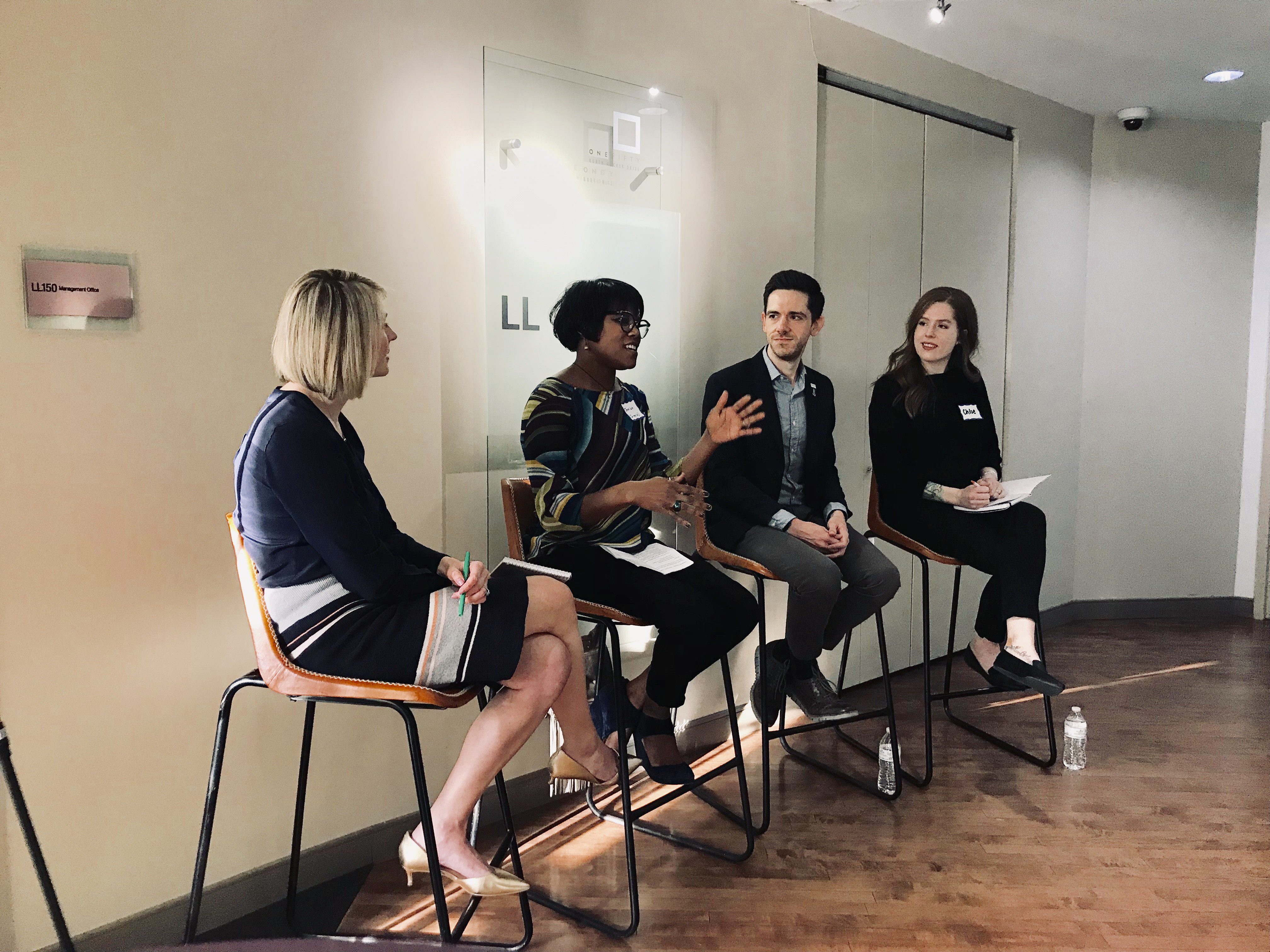Prosper Strategies recently hosted an intimate panel discussion on “the DNA of Impactful Nonprofit Brands.” At this Changemaker Conversations event, dozens of nonprofit marketing and communications professionals filled the room to hear what our guests from three organizations had to say.
Our panel included Anthony Ruth from One Hope United, Jemilah Senter from Illinois Action for Children (IAFC) and Chloe Lahre from OneGoal. While all three of these nonprofits align around the vision of stronger education and family services, their approaches to achieving their missions, as reflected in their branding and marketing, are quite different. Throughout the night, our three panelists discussed the marketing and branding techniques they use, how they’ve evolved over time and their optimism for the future.
Here are some of the biggest insights on the DNA of Impactful Nonprofit Brands our guests gained from our panelists:
Ensure your brand highlights your organization’s strengths.
One of our panelists, Anthony Ruth, described the creative way he thinks of his organization’s brand: like an outfit that accentuates all the right features. To find the right brand––or outfit––for your organization, ask yourself these questions:
What are the assets of your organization you want to accentuate?
Build your organization’s brand in a way that showcases the differentiators and strengths you want your audience to focus on, just as you might build an outfit around a new show-stopping jacket or pair of shoes. For One Hope United, this differentiating strength is their diversity across services and employees. Once you’ve identified what you want to emphasize, you can build language and messaging that shows off your best features.
[bctt tweet=”Build your organization’s brand in a way that showcases the differentiators and strengths you want your audience to focus on, just as you might build an outfit around a new show-stopping jacket or pair of shoes.” username=”ProsperStrat”]Who is the model of your brand?
Often, the model of your brand will be your CEO or someone similar who is the face of your nonprofit. This person needs to champion your strengths, and clearly demonstrate them to both your internal and external audiences. And in leading by example, they will show the rest of your team how they can portray the mission of the organization.
Leverage current events and milestones to help you communicate your mission.
Big events, anniversaries and other milestones are great opportunities to leverage communications and re-engage existing audiences or find new audiences to help you drive your mission forward.
For example, Illinois Action for Children is currently celebrating its 50-year anniversary of supporting early childhood education across the state. On our panel, Jemilah Senter said she sees this as a chance to make early learning a top-of-mind issue for Illinoisians.
“Reflecting on the past is a great opportunity to set your course for the future,” Senter said.
For their 50th anniversary, IAFC chronicled its inception, how it currently works to transform the way Illinois supports early childhood education, and how that transformation will look over the next 50 years. This creative approach helps encourage stakeholders to contribute to their mission by attending their special anniversary annual fundraiser, donating, or exploring IAFC’s resources for parents, educators and other advocates.
Balance your audience’s interest in data and storytelling.
Visual, digestible data can be extremely effective when fundraising or communicating with stakeholders. However, too much data might lead to an impersonal experience, so it’s important to tie that date to engaging stories.
Chloe Lahre found that donors for OneGoal expected to see the impact of their dollars. So, the nonprofit provided donors extensive data about where their money was going, but they found this was often at the expense of good storytelling. Lahre and her team came together to rebalance data and storytelling to satisfy all of their stakeholders.
A couple ways to balance data and storytelling include:
- Visualizing data in a way that audiences will enjoy reading, like infographics that paint a picture of your impact
- Highlighting success stories of how your nonprofit has made a difference in specific communities while leveraging data to show larger trends
Does your nonprofit brand have impact in its DNA?
Consider the challenges and opportunities that the nonprofits at our Changemaker Conversation face. It’s your turn to decide if it’s time to examine how you communicate your nonprofit’s brand to be more impactful for the communities you serve.
You can learn more about how you can rethink your nonprofit’s marketing and communications by reading our Nonprofit Marketing Manifesto. There, we lay out the 10 commitments every organization should take to ensure their marketing and communications are as impactful as possible.
